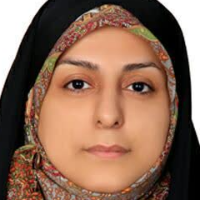A Cognitive Analysis of Motion Verbs of Celestial Bodies in the Holy Qurʾān based on Talmy's Theory
Author(s):
Article Type:
Research/Original Article (دارای رتبه معتبر)
Abstract:
Cognitive sciences deal with research about the mind. Scholars of cognitive sciences consider explaining cognitive functions and hidden processes of the mind possible only through indirect methods such as the study of language. Therefore, cognitive linguistics has a privileged place in cognitive sciences. Motion verbs are one of the most focal fields of study in the meaning-based approach of cognitive semantics. Movement, embodied by means of verb as an active proposition in a sentence, is an important and effective element in conceptualization. The present descriptive-analytical research article studied participial and motion verbs used to refer to celestial bodies in the Holy Qurʾān and drawing on the principles of cognitive semantics examined the way events were conceptualized in the ayahs. In the Holy Qurʾān motion verbs of celestial bodies have been used in order to conceptualize abstract concepts such as the movement of celestial bodies, the way of movements, their occurrences, etc. and as a result different types of semantic concepts of the movement of celestial bodies have been represented in the Qurʾānic ayahs. Half of the verbs used for these objects are motional and the other half are participial. Participial verbs delicately describe the circular path of objects, how they move through the galaxy and where they start and return to their place. Motion verbs also indicate the movement and transition of these objects, which, except when it emphasizes the events of the Resurrection, is still an emphasis on the circular movement and rotation of the heavenly bodies.
Keywords:
Language:
Persian
Published:
Literary - Qura'nic Researches, Volume:10 Issue: 4, 2023
Pages:
39 to 58
https://www.magiran.com/p2588599
سامانه نویسندگان
مقالات دیگری از این نویسنده (گان)
-
A study of the term “Yam” in the Holy Qur’an from the perspective of the Semitic languages
, Fateme Zarei *
A Quarerly Journal Lesan - on Mobeen - on, -
The aesthetics of fire and candle in the poetry of AlSarī al-Raffā based the phenomenology of Gaston Bachelard
Houman Nazemian, Ali Asvadi, Zahra Izadi *
Iranian Association of Arabic Language and Literature, -
A Study on the Process of Interaction between Literature and Cinema, the Novel “The Beginning and the End” by Naguib Mahfouz as an Example
*, Fateme Parchegani
Journal of Arabic Literatur, -
The Comparison of the Style of Travel Writing in the Contemporary Literature of Lebanon and Iran: A Case Study of the Travelogues of Discovering the Hidden Art of Aruban Techniques and from Pariz to Paris
*, Abolhasan Aminmoqadasi, Abdullah Hosseini
Comparative Literature Research, -
Expressing the concepts of color aesthetics in Islamic literature and the works of artists of the second and fourth centuries of Hijra based on Max Luscher's color test (the sample examined by Bashar Bin Bard and Abul Ala Maari)
Ali Piranishal, Fatemeh Parchekani, , Abdollah Hosseini, Ali Yaghoubi *
Islamic Art Studies,





